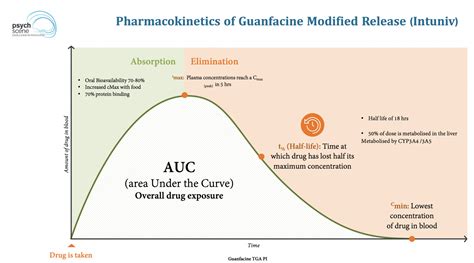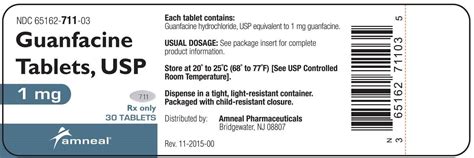Intro
Discover the potential risks of Guanfacine, a medication used to treat ADHD and high blood pressure. Learn about common and rare Guanfacine side effects, including sedation, dizziness, and withdrawal symptoms. Understand how to minimize risks and manage adverse reactions with proper dosing and medical supervision.
Guanfacine is a medication commonly used to treat Attention Deficit Hyperactivity Disorder (ADHD) and high blood pressure. While it can be an effective treatment for these conditions, it's essential to be aware of the potential side effects that may occur. In this article, we'll delve into the possible side effects of guanfacine, their severity, and what you can do to manage them.

As with any medication, guanfacine can cause a range of side effects, some of which may be mild and temporary, while others can be more severe and require medical attention. It's crucial to understand that everyone's body is different, and not everyone who takes guanfacine will experience side effects.
Common Side Effects of Guanfacine
Some of the most common side effects of guanfacine include:
- Drowsiness or fatigue
- Headache
- Dizziness or lightheadedness
- Nausea or vomiting
- Stomach pain or upset
- Constipation
- Dry mouth
- Irritability or mood changes
These side effects are usually mild and may subside on their own within a few days of starting the medication. However, if you experience any of these symptoms and they persist or worsen, it's essential to consult your doctor.
Serious Side Effects of Guanfacine
In rare cases, guanfacine can cause more severe side effects that require immediate medical attention. These include:
- Allergic reactions, such as hives, itching, or difficulty breathing
- Severe dizziness or fainting
- Abnormal heart rhythms or palpitations
- Seizures or convulsions
- Suicidal thoughts or behavior
If you experience any of these symptoms, seek medical help right away.
Long-Term Side Effects of Guanfacine
While guanfacine is generally considered safe for long-term use, there are some potential side effects to be aware of. These include:
- Rebound hypertension: This is a condition where blood pressure increases after stopping the medication.
- Dependence and withdrawal: Guanfacine can be habit-forming, and stopping the medication abruptly can lead to withdrawal symptoms.
- Weight gain: Some people may experience weight gain while taking guanfacine.

Managing Guanfacine Side Effects
If you're experiencing side effects from guanfacine, there are several things you can do to manage them:
- Talk to your doctor: Your doctor may be able to adjust your dosage or recommend alternative medications.
- Keep a side effect journal: Tracking your side effects can help you identify patterns and potential triggers.
- Practice good sleep habits: Establishing a regular sleep schedule and creating a relaxing bedtime routine can help alleviate drowsiness and fatigue.
- Stay hydrated: Drinking plenty of water can help reduce the risk of constipation and other gastrointestinal side effects.
Guanfacine Interactions with Other Medications
Guanfacine can interact with other medications, including:
- Blood thinners, such as warfarin
- Medications for high blood pressure, such as beta blockers
- Stimulants, such as Ritalin
- Antidepressants, such as selective serotonin reuptake inhibitors (SSRIs)
It's essential to inform your doctor about all medications you're taking, including supplements and over-the-counter medications, to minimize the risk of interactions.

Pregnancy and Breastfeeding
Guanfacine is a category C medication, which means that it may not be suitable for pregnant women. If you're pregnant or breastfeeding, it's essential to consult your doctor before taking guanfacine.
Conclusion
Guanfacine can be an effective treatment for ADHD and high blood pressure, but it's crucial to be aware of the potential side effects. By understanding the common and serious side effects, as well as the long-term risks, you can make informed decisions about your treatment. If you're experiencing side effects or have concerns about guanfacine, don't hesitate to talk to your doctor.
What is guanfacine used for?
+Guanfacine is used to treat Attention Deficit Hyperactivity Disorder (ADHD) and high blood pressure.
What are the common side effects of guanfacine?
+The common side effects of guanfacine include drowsiness, headache, dizziness, nausea, and stomach pain.
Can guanfacine interact with other medications?
+Yes, guanfacine can interact with other medications, including blood thinners, medications for high blood pressure, stimulants, and antidepressants.
